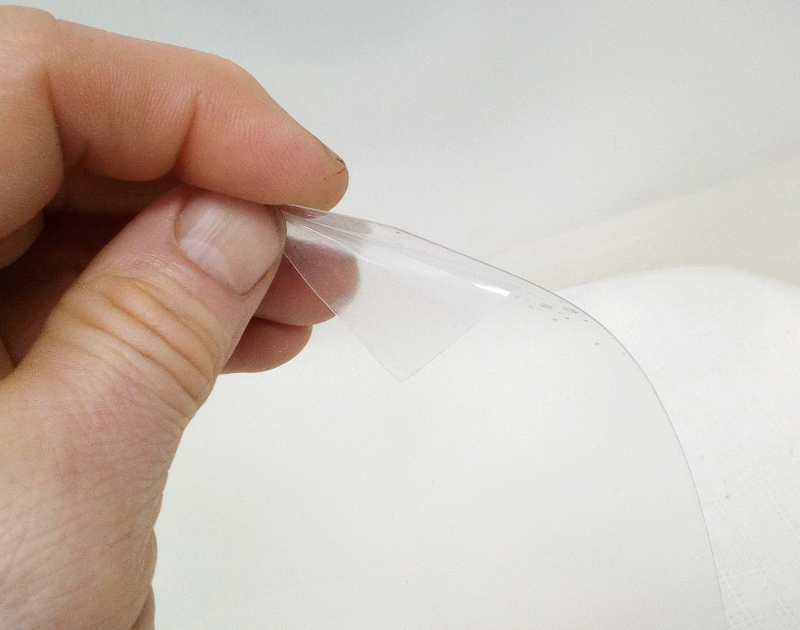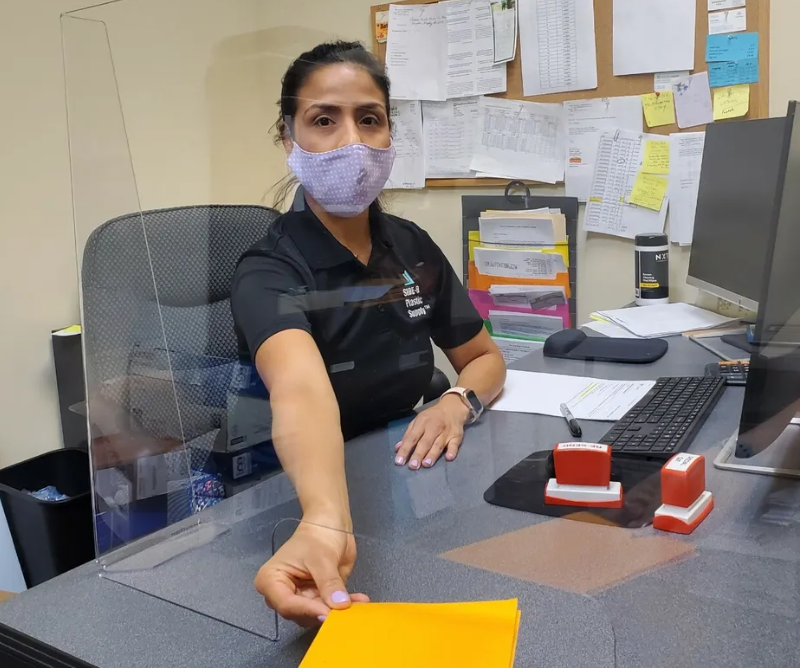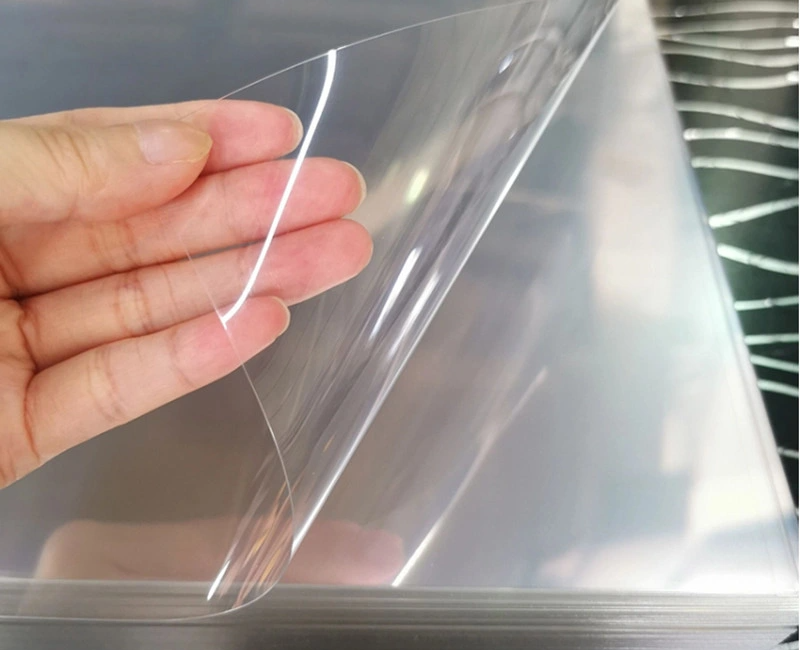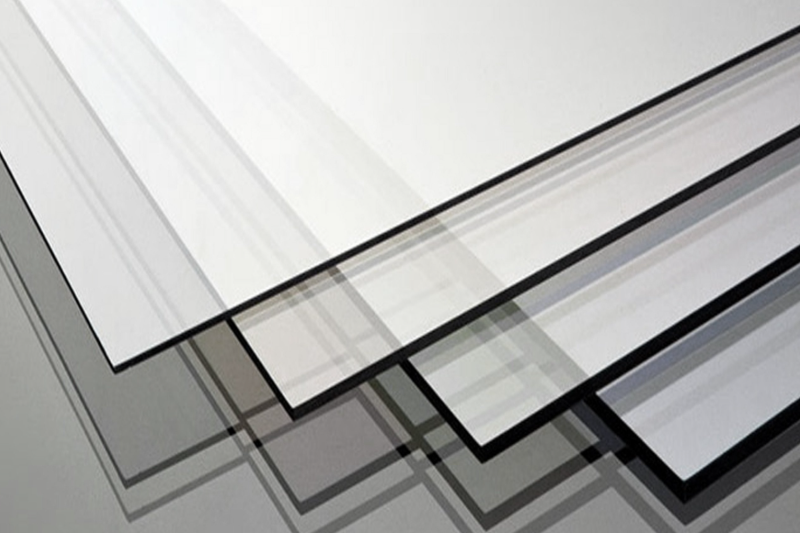Need inexpensive, durable and recyclable alternatives to glass, wood or metals? Consider using plastic sheets. These are thicker panels made from a range of recycled plastics, simple to produce and available with favourable properties. They can be optioned in different surface finishes, machined to different shapes, and are available in dozens of colours. And, they have scores of applications, ranging from hoardings, pergolas, greenhouses and kitchen tops, advertising boards and retail displays, to engineered products seen in specialist military, automotive and electronics uses.
Numerous plastics are used to manufacture plastic sheets, so choosing materials that meet your needs might be the hardest part, considering differing properties, workability, and end prices. One of the most recycled thermoplastics is Polyethylene terephthalate or PET, found in everyday items like water bottles, food containers and packaging. This is also the basis for the PETG sheet. The addition of glycol additives makes PET-G a more durable, chemically and heat resistant, and a more versatile product overall.
Basics of PET-G Sheeting
Standard PET has been used since the 1950s but does have its shortcomings, mainly the low tolerance to higher temperatures, weakening its structure and turning it opaque. Polyethylene terephthalate glycol, or PET-G, came about with the addition of cyclohexane dimethanol at the molecular stage. This raises heat resistance and lowers the melting point, so there’s no crystallisation, making PET-G more suitable for thermoforming, 3D printing and high-temperature applications without affecting structural integrity and durability. The material has higher impact resistance and deals with exposure to chemicals and weathering much better than PET. It’s these improved qualities that make it more versatile.
PET-G sheets are made by extrusion, using processed or recycled plastic pellets that are heated until liquified and then pushed through dies or moulds. This determines their thickness and size. The material is malleable and can be formed in many desired shapes. The molten plastic is cooled and hardened, assuming its final shape. The resulting sheets or panels (depending on their thickness) can be further cut or machined to suit the intended use.
Standout Properties

PET-G builds on the favourable properties of regular PET (high clarity, low weight, easy formability, recyclability and food safety approval) with increased durability and higher resistance to temperature extremes and chemical exposure, particularly solvents. This comes with the addition of glycol. There’s better performance against knocks and impact, and thermal stability of up to 90 degrees Celsius (vs 60 in PET). Moreover, it can be shaped, stretched or formed into any desired shape and size while retaining its high strength. Added benefits over comparable plastics are the short production times, consistent shapes and low cost.
Processing PET sheets is simple. The plastic can be cut using standard tools or machines (saws, guillotines, die cutters etc), ultrasonically and heat welded, and drilled and deburred without damage. Moreover, PET-G adheres easily with the right bonding agents, ensures prints stay in place, and can be polished for a clean, neat look.
Where It’s Used

If you need a durable, heat-resistant and versatile material, PETG sheet ticks all the boxes. Typical uses are in signage, displays and protective screens, with easy formability lending to a variety of shapes, and high transparency making it a more impact-resistant alternative to glass. Sheets can also be colour-blended and printed, or optioned in UV-resistant types for outdoor use to minimise the risk of yellowing or fading.
High clarity and heat resistance also make PET-G desirable in medical products, ranging from syringes, sterilised plastics, pharmaceutical packaging, orthopaedic parts, baby incubators and more. Additionally, the ease of thermoforming allows for intricate designs, often seen in high-end healthcare and cosmetics products.
Superior chemical resistance means safe use with common solvents, cleaning agents and alcohols – ethanol, methanol, acetone, benzene, isopropanol etc, particularly in packaging products. While good performance in temperature extremes (from -40 to +90C), high fire resistance and low expansion rates make it ideal for a variety of construction purposes, ranging from fences and barriers to carports, pergolas, machine guards, vending machines, street furniture and more.
How It Compares to Acrylic
When choosing plastic sheets for your needs, the major considerations are mechanical properties and longevity, aesthetics of the end product and cost. A rival to PETG in most uses is acrylic sheets. Acrylic fares favourably in some aspects, but falls short in others. First, PET-G is up to 7 times stronger, is harder to break or shatter (so safer), but is also more prone to scratching. PET-G while softer, is less brittle and lasts longer, particularly in outdoor construction uses, retail displays and signage. But it is also harder to polish than acrylic, so might not have the high gloss look. Additionally, acrylic sheets are clearer and can be optioned in more colours without significant processing. A major difference though is the higher heat and chemical resistance of PET-G, easier formability and slightly lower costs for comparable sizes and thickness. PET-G is also easier to recycle.
Compared to Polycarbonate
Polycarbonate is used in items as diverse as car headlights, safety glasses, storefront windows, and in many building and construction applications where durability and strength are the main concerns. The material is roughly 100 times stronger than glass and is harder and stronger than PET-G sheets of the same thickness. However, it is also more prone to scratching and requires scratch-resistant layers that significantly up costs.
What goes in favour of polycarbonate sheeting is its relatively simple bending and formability, particularly for building products; its higher clarity; the wider colour options; high UV resistance (without additives) and much higher heat resistance. This though comes at a cost, as polycarbonate sheets average twice as much as PET-G. While polycarbonate does have its benefits, the high purchase price of both recycled or virgin polycarbonate pellets and the higher processing needs make it a more expensive material for specialist uses.
Final Takes on PET-G Sheet

If you’re after an inexpensive thermoplastic that’s easy to shape, has high impact and heat resistance, lasts for ages and has a clean, transparent finish that can be modified for numerous applications, then PET-G plastic sheet should be high on your shopping list. Plastic suppliers source PET-G sheets in varying sizes (2050 by 1014, 2050 by 1220, and 3050 by 2050mm) and thicknesses ranging from 1.5 to 8mm. The same companies offer PETG sheet cut-to-size and machining and finishing services for end products.

